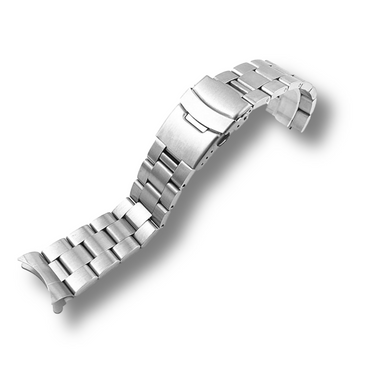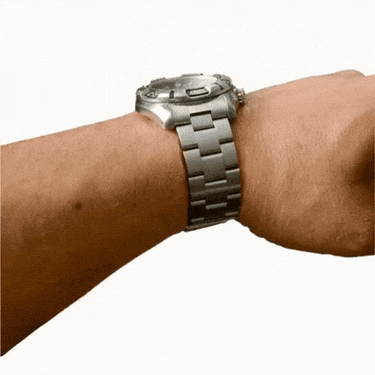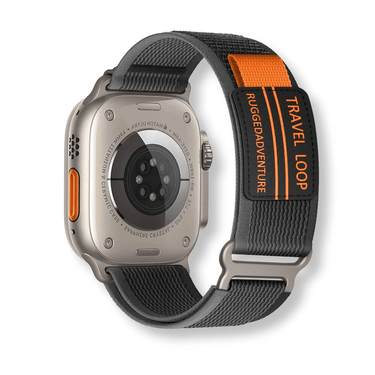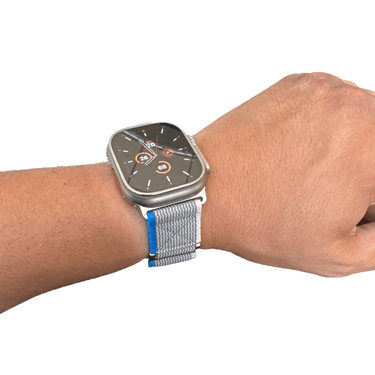Introduction: The Importance of Watches and the Evolution of Timepieces
Watches have been a staple in human society for centuries, serving as both a functional tool and a fashionable accessory. From the pocket watches of the 16th century to the high-tech smartwatches of today, timepieces have undergone countless transformations throughout history. As technology has advanced, so too has our ability to measure time with precision.
The invention of quartz movements in the 1970s revolutionized watchmaking, making it more accurate and affordable than ever before. However, despite all these advancements, one thing remains constant: automatic watches require regular winding to function properly.
Introducing Watch Winders: A Solution to an Age-Old Problem
Automatic watches rely on kinetic energy from movement to keep ticking. When not in use for an extended period, they can run out of power, leading to inaccurate timekeeping or even damage. That's where watch winders come into play.
A watch winder is a device that keeps automatic watches wound when not being worn by simulating natural wrist movement through rotation. They are essential for keeping luxury watches running smoothly and accurately over long periods without manual winding.
However, some may argue that watch winders are nothing more than an unnecessary luxury item for watch enthusiasts with money to burn. But I beg to differ - they are necessary tools for anyone who wants their automatic watch always ready-to-wear without losing accuracy or risking damage.
The Early Days of Watch Winding
The concept of a device that could wind a wristwatch automatically first appeared in the late 19th century when John Harwood patented his "self-winding" system in 1923. However, these early designs were often bulky and unreliable compared to modern-day winders.
The first-ever electronic watch winder was created by Orbita Corporation during World War II. Still, it was not until the 1980s that watch winders became widely popular with the rise of automatic watches.
Looking back, early watch winders were a far cry from what we now consider to be efficient and practical. But these primitive designs paved the way for the modern-day sophistication and convenience that we enjoy today.
The Early Days of Watch Winding
Fumbling in the Dark: Early Attempts at Creating Watch Winders
Let's take a moment to appreciate how far we've come with watch winders, because the early attempts at creating them were laughably bad. In the 19th century, watchmakers began experimenting with mechanical devices that could keep watches wound when they weren't being worn. These first winders were often large and clunky, resembling miniature music boxes more than anything else.
They were also unreliable - many of them frequently broke down or simply failed to wind the watch properly. It's hard to imagine using one of these early winders today, but back then it was cutting-edge technology.
The idea was to create a device that mimicked human movement by rotating the watch in different directions to keep the mainspring wound. Unfortunately, most of these early designs were mechanical nightmares that required constant maintenance just to keep them running.
Size Matters: The Problems with Early Watch Winder Designs
One of the biggest problems with early watch winder designs was size. These winders were often too large and bulky for everyday use.
They took up valuable space on dressers and couldn't be easily transported when traveling. Not only that, but their size made them more expensive as well - something many collectors didn't want to spend money on.
Another issue with these early winders was their lack of versatility when it came to different types of watches. Different brands had different winding requirements, meaning that collectors might need multiple winders for their collections - an expensive proposition indeed.
Unreliable Technology: Why Early Watch Winders Were So Problematic
The unreliability of early watch winder technology can be attributed to a few key factors. First and foremost, materials were not as advanced as they are now - intricate parts would often wear out or break, rendering the entire winder useless. Additionally, early winders were often over-engineered, with complex systems of gears and levers that were prone to jamming.
As a result of these design flaws, early watch winders became something of a novelty item - collectors only used them on rare occasions, and most people simply wound their watches by hand. It wasn't until the mid-20th century that automatic watches became popular and created a renewed interest in watch winding technology.
The Rise of Automatic Watches
In the mid-20th century, automatic watches began to grow in popularity. Unlike traditional watches that require winding daily, these watches are powered by the movement of the wrist.
This innovative technology allowed for a more effortless experience for watch owners. As a result, automatic watches became sought-after items by both casual and serious collectors alike.
One of the reasons for their popularity was their accuracy. Automatic watches are incredibly precise and can keep time within a few seconds per day.
This high level of accuracy made them ideal for everyday wear and use. Additionally, automatic watches were often associated with luxury and prestige due to their intricate inner workings.
Increased Demand for Watch Winders
As automatic watches gained traction in the market, so did the need for watch winders. Since these watches rely on movement to stay running, owners found it difficult to keep them ticking when they weren't being worn regularly. A watch winder provides an easy solution as it mimics the movement of a wearer's wrist, keeping an automatic watch wound and ready at all times.
The demand for watch winders grew substantially during this time period as collectors began seeking out ways to ensure their prized possessions were always functioning correctly. Many companies started producing more affordable options that catered specifically to automatic watch wearers.
Today, there are countless types of watch winders available on the market - from single-watch winders to multi-watch winders that can store up to 50 timepieces at once! And with modern advancements like programmable settings and silent motors, owning a high-quality winder has never been easier or more convenient.
Final Thoughts
The rise in popularity of automatic watches is just one example of how technology has revolutionized our world over the years. It's fascinating how something so seemingly simple could change the way we interact with our timepieces entirely!
With the increased demand for watch winders, it's clear that collectors and enthusiasts alike value convenience and precision when it comes to their watches. As technology continues to evolve, who knows what innovations will come next, but one thing is for sure - the world of horology is always changing, and we can't wait to see what comes next.
Modern Watch Winders: Design and Functionality
Explore Contemporary Designs
Gone are the days of bulky, one-size-fits-all watch winders. With today's modern technology and design, there are a variety of contemporary options available to suit any watch collector's needs.
From sleek single winders to quad winders that can handle multiple watches at once, there is something for everyone. One popular design is the double winder, which allows for two watches to be wound simultaneously.
This is especially useful for couples who both have automatic watches they want to keep running smoothly. Another notable innovation is the triple winder, which can accommodate up to three watches at once.
New Features: Programmable Settings, LED Lighting & Silent Motors
In addition to sleek designs, many modern watch winders offer new and exciting features that make them even more convenient and user-friendly. For example, programmable settings allow users to customize the rotation speed and direction based on their specific watch brand or model. This ensures that each watch receives the optimal winding experience.
LED lighting is another popular feature that has been added to many contemporary watch winders. Not only does this add a stylish touch, but it also makes it easy for collectors to see their watches even in dimly lit rooms or display cases.
Silent motors have become increasingly common in modern watch winders. Noisy motors are not only annoying but can potentially damage delicate automatic watches over time.
Silent motors ensure that your timepieces are being wound quietly and safely. Overall, with modern technology advancements and sleek designs available on today's watch winders market - there is no excuse not having one available if you're serious about your collection!
Luxury Watch Winders: Time is Money, So Why Not Spend it on the Best?
When it comes to luxury watch winders, there are a few brands that stand out above the rest. Buben & Zorweg and Scatola del Tempo are among them.
These companies are known for their high-end craftsmanship and top-of-the-line features that cater to the most discerning watch enthusiasts. One of the unique features offered by these companies is biometric security systems.
This ensures that your expensive watches are safe and secure when not being worn. Additionally, built-in humidors can help preserve the quality of your timepieces over time by keeping them in optimal conditions.
While some might balk at spending thousands of dollars on a watch winder, these luxury options offer unparalleled peace of mind for those who have invested heavily in their collection. In short, if you're looking for the best way to keep your watches running smoothly while ensuring their safety and longevity, you can't go wrong with a high-end watch winder.
DIY Watch Winders: Creative Solutions on a Budget
For those who don't have thousands of dollars to spend on a luxury watch winder, there are DIY options available that can get the job done with household items and a little creativity. While homemade winders won't offer quite the same level of sophistication as their high-end counterparts, they can still be effective tools for keeping automatic watches running smoothly. One popular DIY option involves using an old record player turntable as the base for your winder mechanism.
By attaching small motors or other rotational devices onto the turntable surface, you can create an effective system that will keep your watch winding continuously throughout the day. Another option involves using PVC piping or other materials to build a simple cylindrical structure with an opening at one end where you can insert your watch band.
The mechanism inside will then rotate the watch as needed to keep it running smoothly. Whether you're looking to save money or simply enjoy hands-on projects, DIY watch winders can be a fun and effective solution that offers more customization than pre-built models.
Conclusion: A Timeless Investment
No matter whether you invest in a luxury watch winder or choose to make your own, one thing is clear: taking care of your automatic watches is a task worth investing time and money into. These watches are precious investments that can last for generations when properly maintained, and a good winder can help ensure their longevity.
Whether you opt for high-end craftsmanship or DIY ingenuity, the important thing is to find a system that works for you and your collection. So take some time today to explore the options available and find the perfect way to keep your timepieces ticking – it's an investment that will pay off for years to come!

























